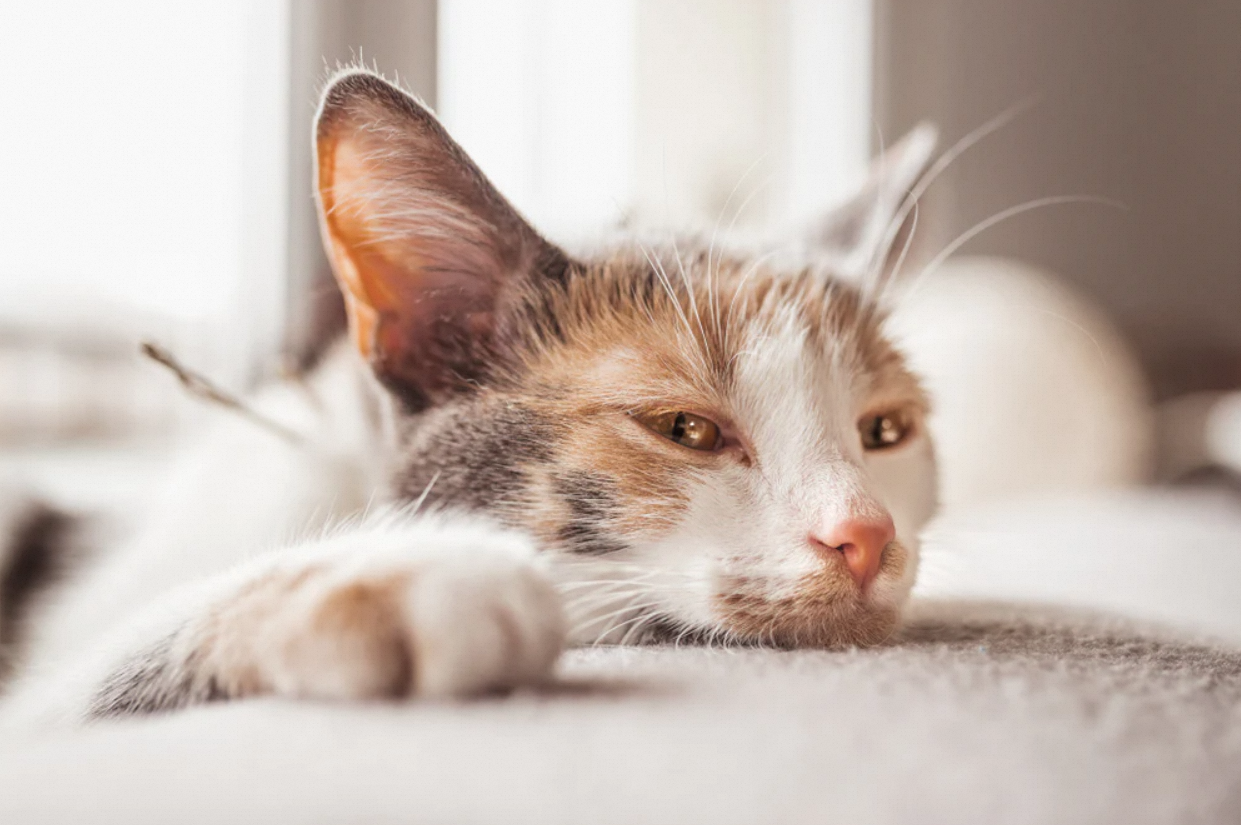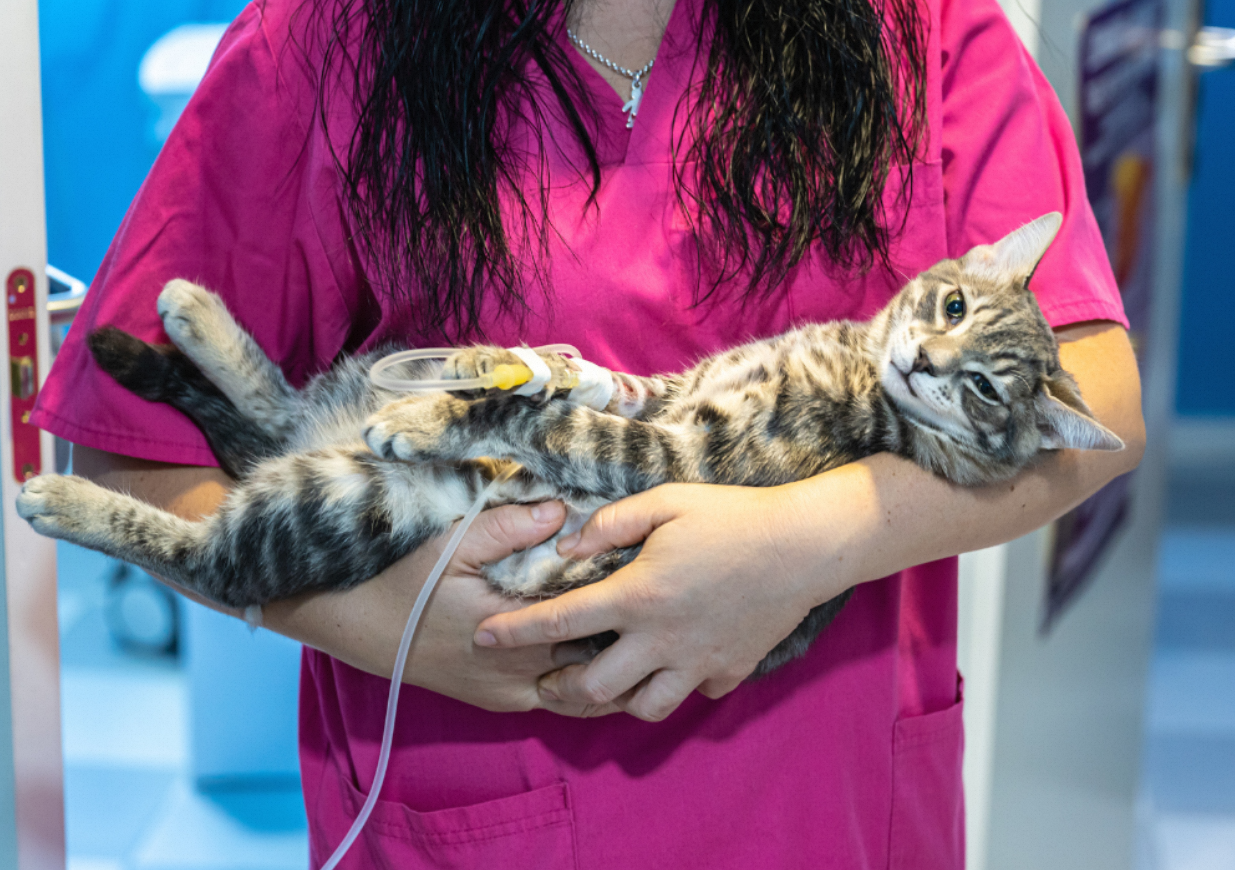Have you kept a cat?If so, you should learn something about panleukopenia in cats.For this virus can cause serious health problems for your cats.Here are 5 important things you need to know that your cat will keep healthy.
In This Article
What is panleukopenia?
Panleukopenia, also known as feline panleukopenia (FPV), feline infectious enteritis, and feline parvo. It is a highly contagious and potentially deadly viral disease in cats. The virus responsible for this condition is the feline parvovirus, a close relative of the canine parvovirus.
The disease primarily affects rapidly dividing blood cells in the body, particularly those in the intestinal tract, bone marrow, and stem cells of a developing fetus. As a result, panleukopenia is characterized by a severe decrease in the number of white blood cells (leukopenia). While they are crucial for the immune response, making infected cats more susceptible to other infections.
Symptoms of panleukopenia
The symptoms of panleukopenia will vary in severity depending on the stage of the disease and the cat’s immune response. Here are some common symptoms.
 Lethargy and Weakness: Cats infected with panleukopenia often become noticeably lethargic and may show a lack of energy or interest in usual activities.
Lethargy and Weakness: Cats infected with panleukopenia often become noticeably lethargic and may show a lack of energy or interest in usual activities.
Fever: A high body temperature is a common symptom of panleukopenia.
Loss of Appetite: Infected cats may experience a significant decrease in appetite and refuse to eat or drink.
Vomiting: Panleukopenia can cause vomiting. The contents and fluid in cats’s stomach will get in loss.
Diarrhea: The virus attacks the gastrointestinal tract. Diarrhea and then occur, which may be watery, foul-smelling, and may contain blood.
Dehydration: Frequent vomiting and diarrhea can quickly lead to dehydration. Cats may suffer sunken eyes, dry gums, and a loss of skin elasticity.
Rapid Weight Loss: Due to poor appetite and nutrient absorption, infected cats may experience rapid weight loss.
Anemia: Panleukopenia can cause a decrease in red blood cells, leading to anemia. Pale gums and weakness may be observed.
 Immune Suppression: The virus targets and suppresses the immune system, so infected cats more vulnerable to secondary infections.
Immune Suppression: The virus targets and suppresses the immune system, so infected cats more vulnerable to secondary infections.
Neurological Symptoms: In severe cases, panleukopenia can affect the nervous system. Cats will get in tremors, seizures, and coordination difficulties.
How is panleukopenia diagnosed?
Here are some common methods used to diagnose panleukopenia.
Physical Examination: The veterinarian will conduct a comprehensive physical examination.They will check for signs of dehydration, fever, abdominal pain, and other clinical manifestations associated with panleukopenia.
Medical History: The cat’s medical history, including vaccination records and exposure to other cats, will be assessed to evaluate the likelihood of panleukopenia.
Blood Tests: A complete blood count (CBC) is typically performed to assess the white blood cell count, which is often decreased in cats with panleukopenia. The CBC may also reveal changes associated with anemia and other abnormalities.
 Fecal Tests: Fecal samples may be examined to detect the presence of the virus or to identify other potential causes of gastrointestinal symptoms. Polymerase chain reaction (PCR) tests can detect the genetic material of the virus.And immunofluorescence assays or enzyme-linked immunosorbent assays (ELISA) can detect the presence of viral antigens.
Fecal Tests: Fecal samples may be examined to detect the presence of the virus or to identify other potential causes of gastrointestinal symptoms. Polymerase chain reaction (PCR) tests can detect the genetic material of the virus.And immunofluorescence assays or enzyme-linked immunosorbent assays (ELISA) can detect the presence of viral antigens.
Serological Tests: Blood samples may be taken to assess the presence of antibodies against the feline panleukopenia virus. These tests can help determine if the cat has been previously exposed to the virus or if vaccination has provided immunity.
How is panleukopenia treated?
 If you want to successfully treat a cat with acute panleukopenia, you need aggressive fluid therapy and supportive care in an isolation unit. Electrolyte imbalances (eg, hypokalemia), hypoglycemia, hypoalbuminemia, anemia, and probabilistic secondary infections commonly occur in severely affected cats. It’s necessary to do comprehensive evaluation, close monitoring, and timely intervention for infected animals.
If you want to successfully treat a cat with acute panleukopenia, you need aggressive fluid therapy and supportive care in an isolation unit. Electrolyte imbalances (eg, hypokalemia), hypoglycemia, hypoalbuminemia, anemia, and probabilistic secondary infections commonly occur in severely affected cats. It’s necessary to do comprehensive evaluation, close monitoring, and timely intervention for infected animals.
Intravenous hydration and maintenance of fluid balance are the basis of treatment. In addition to intravenous fluid rehydration, infusion of fresh frozen plasma can also help maintain plasma colloid osmotic pressure. It also provides coagulation factors for severely ill patients and infected animals with hypoalbuminemia. Some FPV antibodies are also provided. Transfusion of whole blood is more suitable for cats with severe anemia.
Managing intestinal parasites is also an important part of recovery from feline panleukopenia, as parasites can complicate the condition. The use of anthelmintics is therefore an important consideration and can be started after vomiting is controlled.
Ways to prevent panleukopenia
 Excellent inactivated and modified live virus vaccines provide stable, long-lasting immune protection. Can be used to prevent panleukopenia in cats. However, live vaccines should not be given to pregnant, immunosuppressed, unhealthy cats or kittens less than 4 weeks old. Most authorities recommend that kittens be vaccinated with modified live vaccines (subcutaneously) 2-3 times, spaced 3-4 weeks apart. The first vaccination is usually given at 6-9 weeks of age. It is recommended that the last injection be given after the kitten reaches 16 weeks of age to reduce the interference of maternal antibodies to the vaccine and ensure the immune effect. Exposure to the virus should be avoided until 1 week after completion of the first vaccination series.
Excellent inactivated and modified live virus vaccines provide stable, long-lasting immune protection. Can be used to prevent panleukopenia in cats. However, live vaccines should not be given to pregnant, immunosuppressed, unhealthy cats or kittens less than 4 weeks old. Most authorities recommend that kittens be vaccinated with modified live vaccines (subcutaneously) 2-3 times, spaced 3-4 weeks apart. The first vaccination is usually given at 6-9 weeks of age. It is recommended that the last injection be given after the kitten reaches 16 weeks of age to reduce the interference of maternal antibodies to the vaccine and ensure the immune effect. Exposure to the virus should be avoided until 1 week after completion of the first vaccination series.
It is usually recommended that adult cats receive FPV vaccine every three years, with the vaccination interval increasing year by year. Antibody titer test kits are commercially available and can be used to detect cat-to-feline panleukopenia antibody levels. Therefore, for pet owners who prefer repeated, regular vaccinations, testing antibody levels first can serve as an alternative to direct vaccination.
